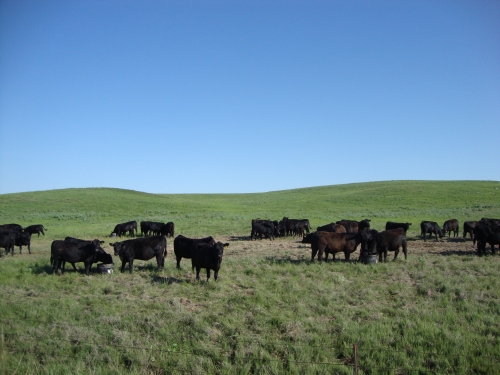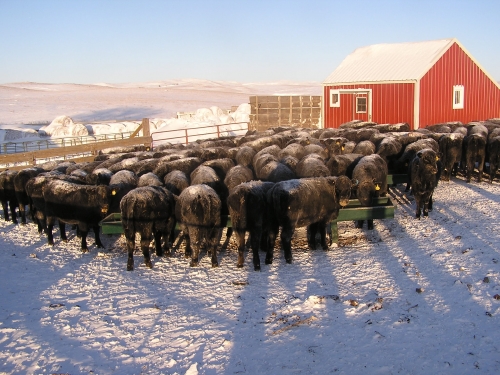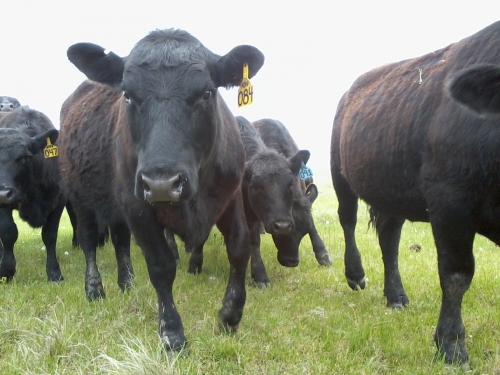Cattle
Raising cattle is one of our passions. We get a lot of satisfaction out of taking care of these fascinating animals and playing a part in providing food and fiber for people around the world. It’s a win-win for us, doing something we love and making a living at it.
We care for around 500 Angus cows. Our goal is to have a herd of problem-free, easy-keeping, functional cows that can raise a calf each year without much help from us – cows that work for us, not the other way around. They are expected to graze as much of the year as possible, whether it be on native range or cornstalks. Since we live in the northern Great Plains, the weather can make that a challenge in some years due to our winters.
The cows calve from mid-April to mid-June on grass to better match our resources with the cows’ needs. We have been gradually moving our calving dates back over the past few years. There are a couple reasons for that. First, baby calves and bad weather don’t mix. We were getting tired of dealing with snow and cold during the busiest part of calving. We were also having trouble keeping our early-calving cows calving early. Many would catch on the first cycle one year, then move back a cycle or two the next, then catch up again. We figured it was probably because those early-calving cows weren’t getting adequate nutrition like the later-calving cows were. Rather than have to buy better feed, we opted to calve later and let the green grass do the job for us. Another reason for calving later is the marketing of the calves. More about that later.
In June, we do our spring shots and castrating. Each calf gets vaccinated for at least 12 different diseases. The bulls are castrated with a sharp knife – the cleanest and most humane way we’ve found to do it. The younger the calves are when castrated, the quicker they heal. The cows also get a booster on certain vaccinations at this time prior to breeding – this helps safeguard their upcoming pregnancy.
In July, we put the bulls with the cows. The virgin heifers are with the bulls for 30 days, and the cows get the bulls’ company for 60 days.
Fall booster shots are given to the calves in late August or early September. We give some additional vaccinations to prepare them for life apart from mama, which will be coming soon.
We wean the calves off at different times, depending on the year. In dry years, the calves have been weaned as early as late September in order to reduce the herd’s forage demand. Other years, it has been November. Some are weaned at home on grass, others are sent directly to a custom feedlot. Every year is different, depending on what our grass situation is and what the cattle market is doing.
We’ve retained ownership on several groups of calves in the past five or so years. The cattle we’ve sold on quality grids have done well – up to 100% USDA Choice or better.


























